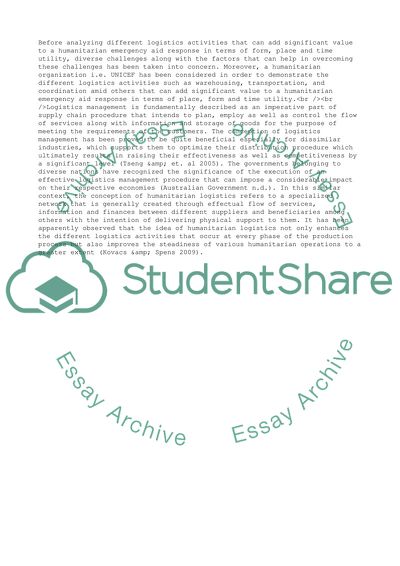Cite this document
(The Aspect of Logistics Management or Humanitarian Logistics in UNICEF Case Study, n.d.)
The Aspect of Logistics Management or Humanitarian Logistics in UNICEF Case Study. Retrieved from https://studentshare.org/management/1612423-logistic-management-report
The Aspect of Logistics Management or Humanitarian Logistics in UNICEF Case Study. Retrieved from https://studentshare.org/management/1612423-logistic-management-report
(The Aspect of Logistics Management or Humanitarian Logistics in UNICEF Case Study)
The Aspect of Logistics Management or Humanitarian Logistics in UNICEF Case Study. https://studentshare.org/management/1612423-logistic-management-report.
The Aspect of Logistics Management or Humanitarian Logistics in UNICEF Case Study. https://studentshare.org/management/1612423-logistic-management-report.
“The Aspect of Logistics Management or Humanitarian Logistics in UNICEF Case Study”, n.d. https://studentshare.org/management/1612423-logistic-management-report.


